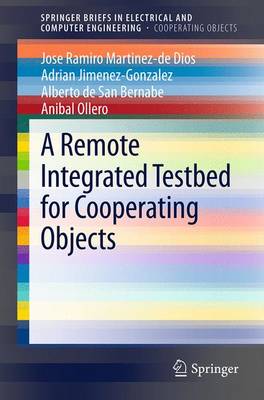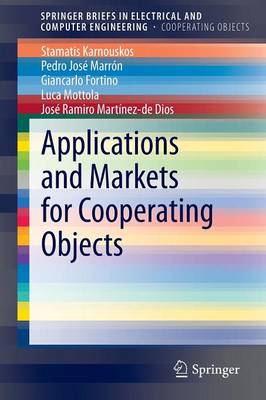SpringerBriefs in Cooperating Objects
4 total works
Localization and tracking are key functionalities in ubiquitous computing systems and techniques. In recent years a very high variety of approaches, sensors and techniques for indoor and GPS-denied environments have been developed. This book briefly summarizes the current state of the art in localization and tracking in ubiquitous computing systems focusing on cluster-based schemes. Additionally, existing techniques for measurement integration, node inclusion/exclusion and cluster head selection are also described in this book.
A Remote Integrated Testbed for Cooperating Objects
by Jose Ramiro Martinez-de Dios, Adrian Jimenez-Gonzalez, Alberto de San Bernabe, and Anibal Ollero
Testbeds are gaining increasing relevance in research domains and also in industrial applications. However, very few books devoted to testbeds have been published. To the best of my knowledge no book on this topic has been published. This book is particularly interesting for the growing community of testbed developers. I believe the book is also very interesting for researchers in robot-WSN cooperation.
This book provides detailed description of a system that can be considered the first testbed that allows full peer-to-peer interoperability between heterogeneous robots and ubiquitous systems such as Wireless Sensor Networks, camera networks and pervasive computing systems. The system architecture includes modules that allows full bidirectional communication between robots and WSN. One robot can
The book describes the current state of the art in development of testbeds integrating Cooperating Object technologies. It describes in detail the testbed specification and design using requirements extracted from surveys among experts in robotics and ubiquitous systems in academia and industry. The book also describes the testbed novel architecture and its hardware and software components. Moreover, it includes details on user support tools to facilitate its use such as remote use using a virtual private network and sets of functionalities of interest for members from the robotics, WSN and robot-WSN communities. Finally, the book illustrates its capabilities and potentialities describing the implementation of some of the experiments that have been performed. Examples from the robotics, WSN and robot-WSN communities are described.
Applications and Markets for Cooperating Objects
by Stamatis Karnouskos, Pedro Jose Marron, Giancarlo Fortino, Luca Mottola, and Jose Ramiro Martinez-de Dios
The book presents of the main results provided by the corresponding European project "CONET".



